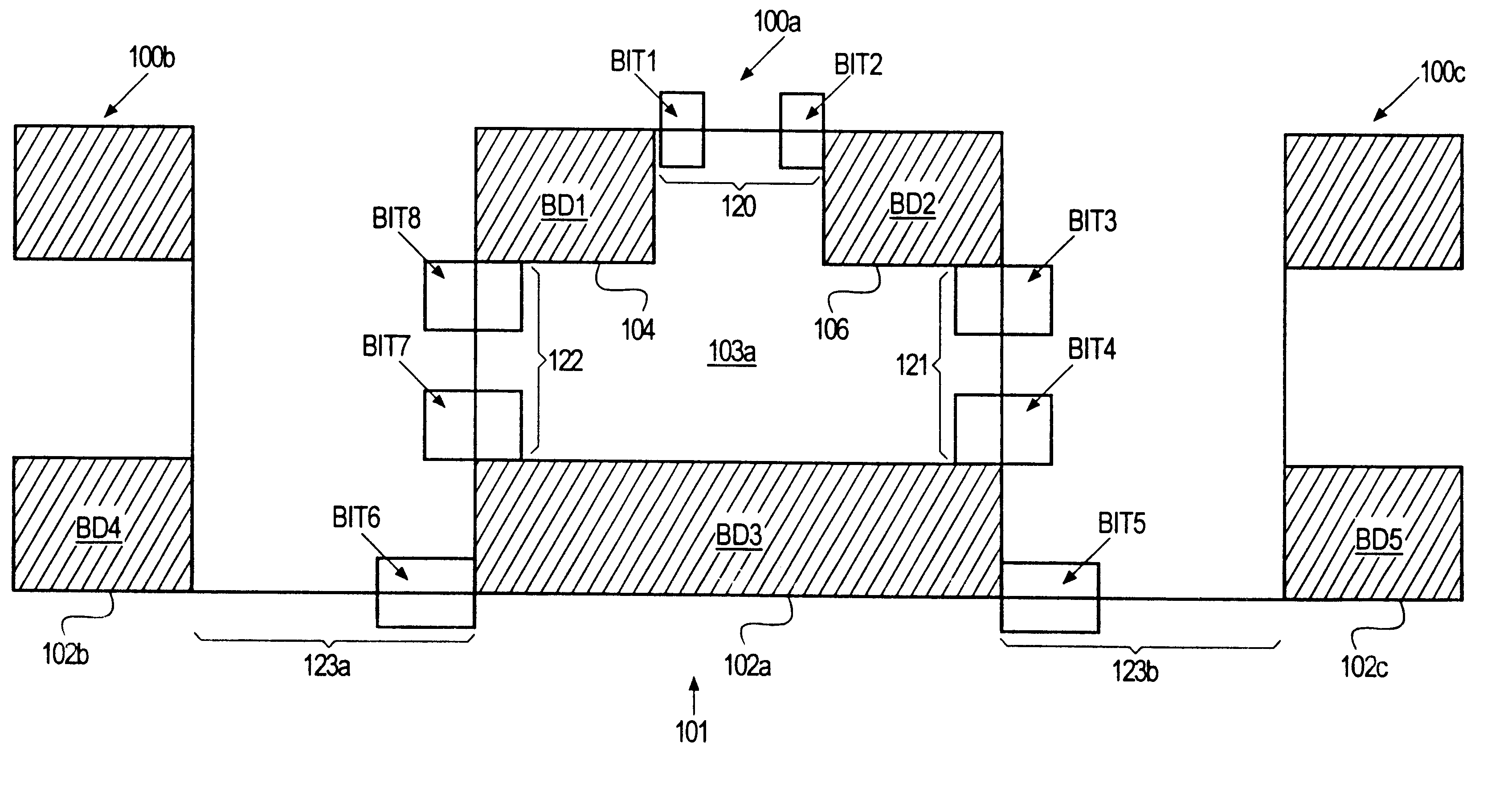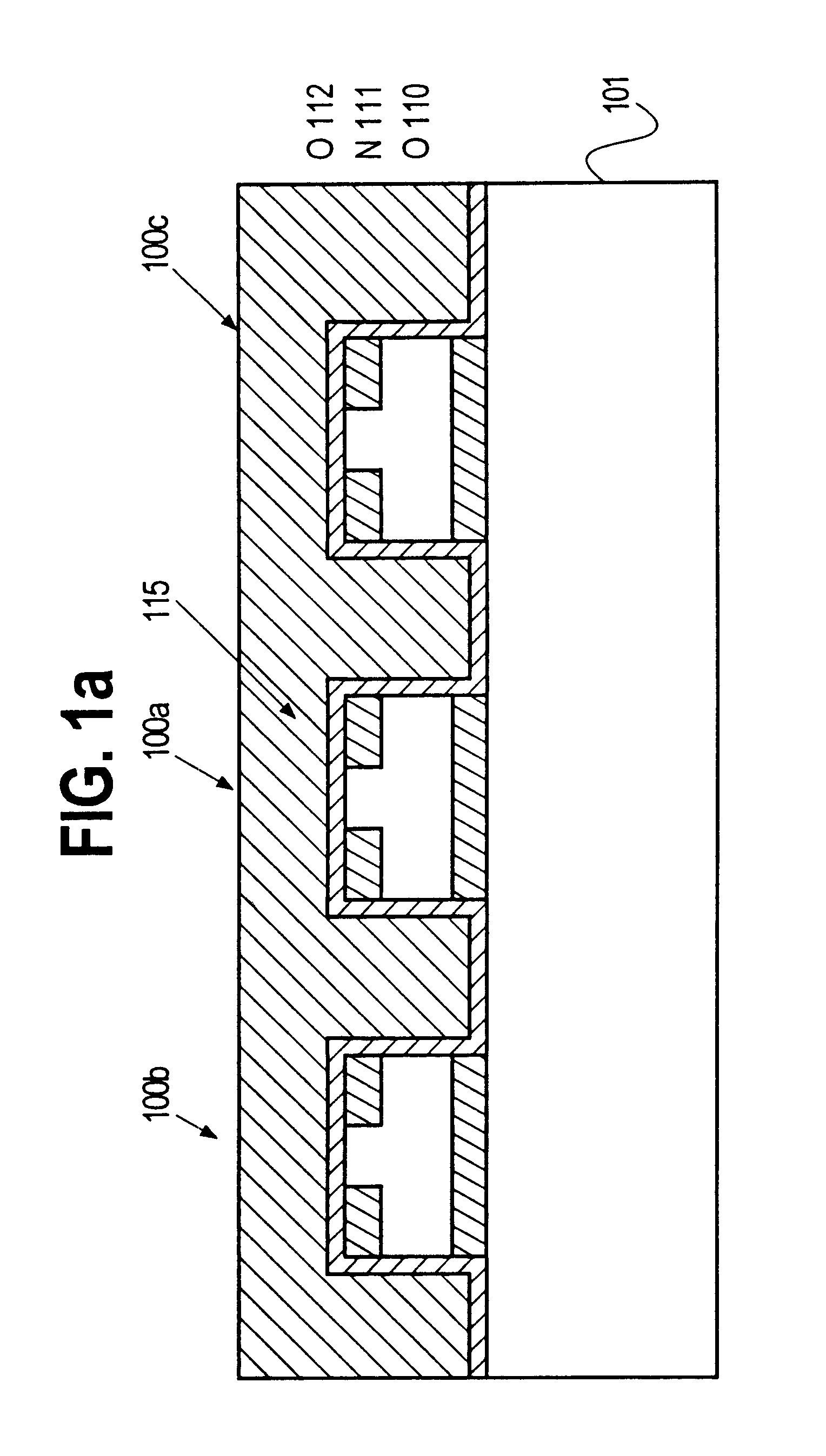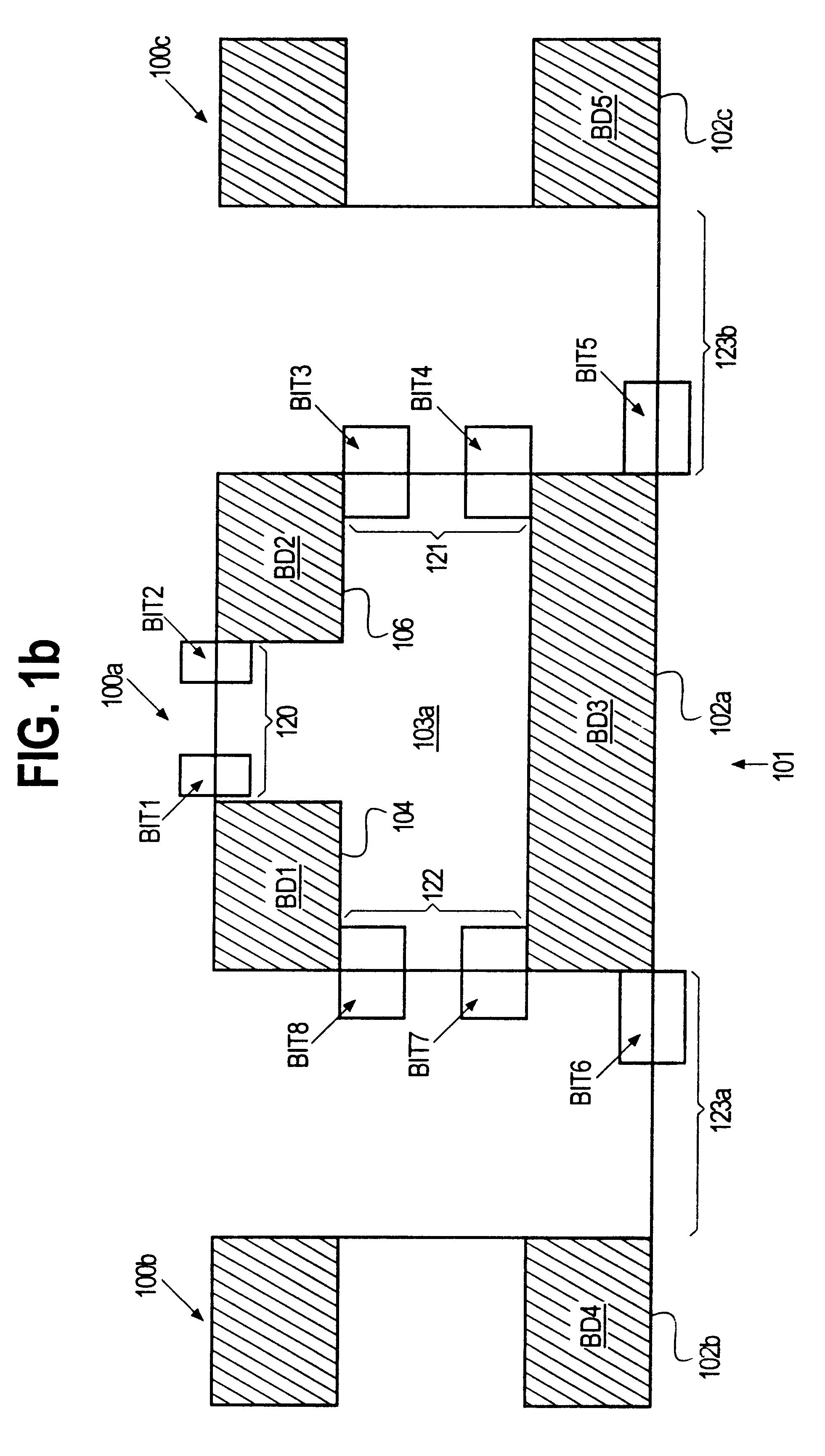8 bit per cell non-volatile semiconductor memory structure utilizing trench technology and dielectric floating gate
a non-volatile semiconductor and memory structure technology, applied in semiconductor devices, electrical devices, instruments, etc., can solve the problems of poor reliability, difficult design and manufacture of multi-level storage cells,
- Summary
- Abstract
- Description
- Claims
- Application Information
AI Technical Summary
Problems solved by technology
Method used
Image
Examples
Embodiment Construction
While the present invention may be embodied in many different forms and produced by various different fabrication processes, there is shown in the drawings and discussed herein one specific embodiment and fabrication method with the understanding that the present disclosure is to be considered only as an exemplification of the principles of the invention and is not intended to limit the invention to the embodiment illustrated.
FIGS. 1a and 1b show eight-bit non-volatile memory cell structures 100 that are formed on and incorporate a portion of semiconductor substrate 101 in association with the present invention. As each cell 100 is preferably constructed identically, the structure for cell 100a shall be described with the understanding that such structure is preferably found in each cell. Some memory cells varying from this main construct may be used in association with cell 100. In fact, it is contemplated that modified versions of cell 100 (and other types of cells) will likely be...
PUM
 Login to View More
Login to View More Abstract
Description
Claims
Application Information
 Login to View More
Login to View More - R&D
- Intellectual Property
- Life Sciences
- Materials
- Tech Scout
- Unparalleled Data Quality
- Higher Quality Content
- 60% Fewer Hallucinations
Browse by: Latest US Patents, China's latest patents, Technical Efficacy Thesaurus, Application Domain, Technology Topic, Popular Technical Reports.
© 2025 PatSnap. All rights reserved.Legal|Privacy policy|Modern Slavery Act Transparency Statement|Sitemap|About US| Contact US: help@patsnap.com



